A photo essay and guide about the idyllic village of Nongriat and the living root bridges of Meghalaya, one of the highlights of traveling in Northeast India.
In the far northeast corner of India lies Meghalaya, the “abode of the clouds”. The title is fitting: Meghalaya is the wettest state in India. Every year, more than 12 meters of rain pour down upon its lush green mountains and river valleys.
But the abundant rainfall isn’t the only natural wonder drawing tourists to this northeastern “sister” state. Deep in Meghalaya’s forests grow its most famous attractions: the living root bridge.
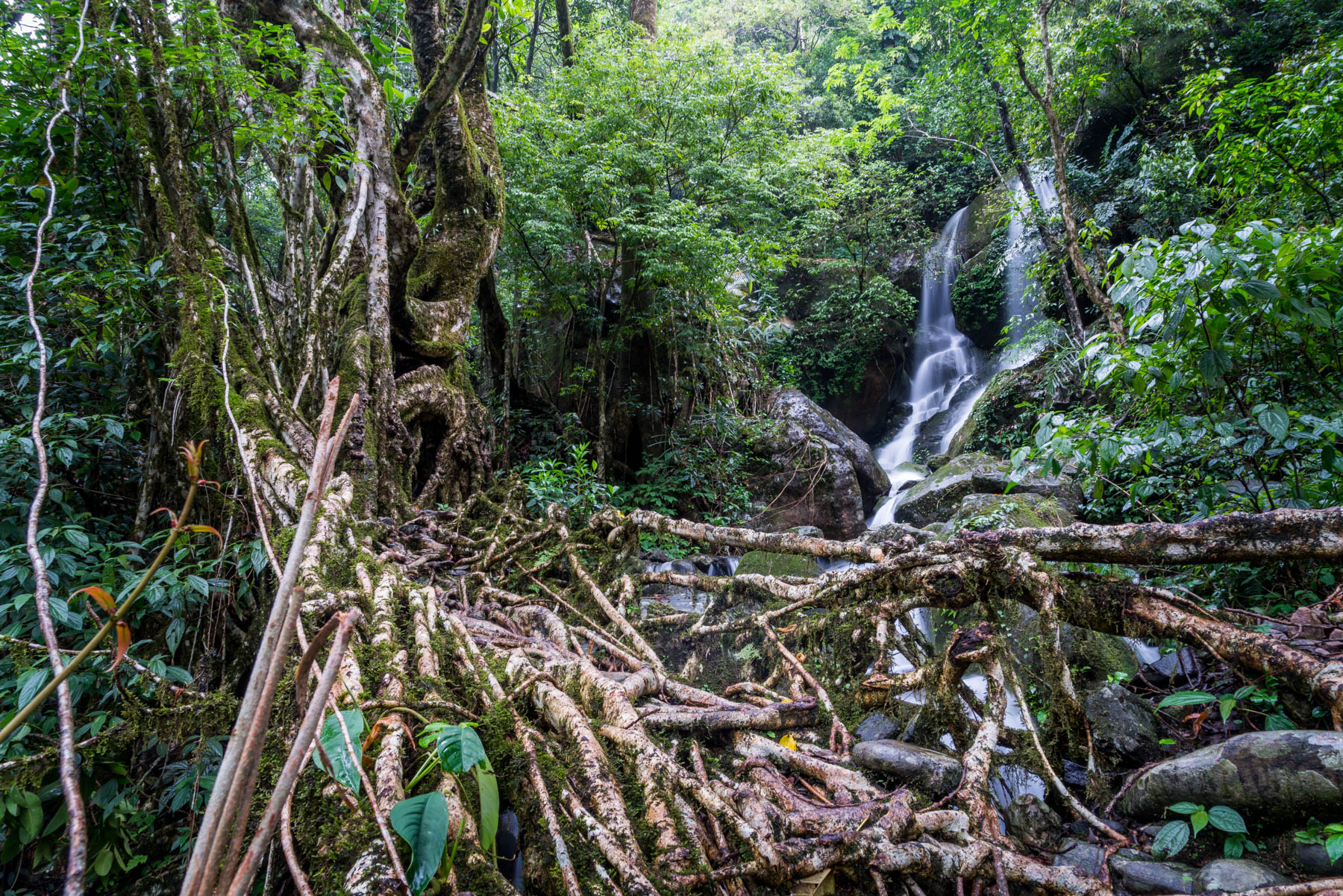
Crafted by the local Khasi people, the bridges are made from the roots of rubber trees. Traditionally, the roots are carefully guided across spaces using the straight trunks of betel nut trees…

… and are sometimes tied for increased support.
Looking for more inspiration in Meghalaya? Check out this article on the Mawsmai Caves!
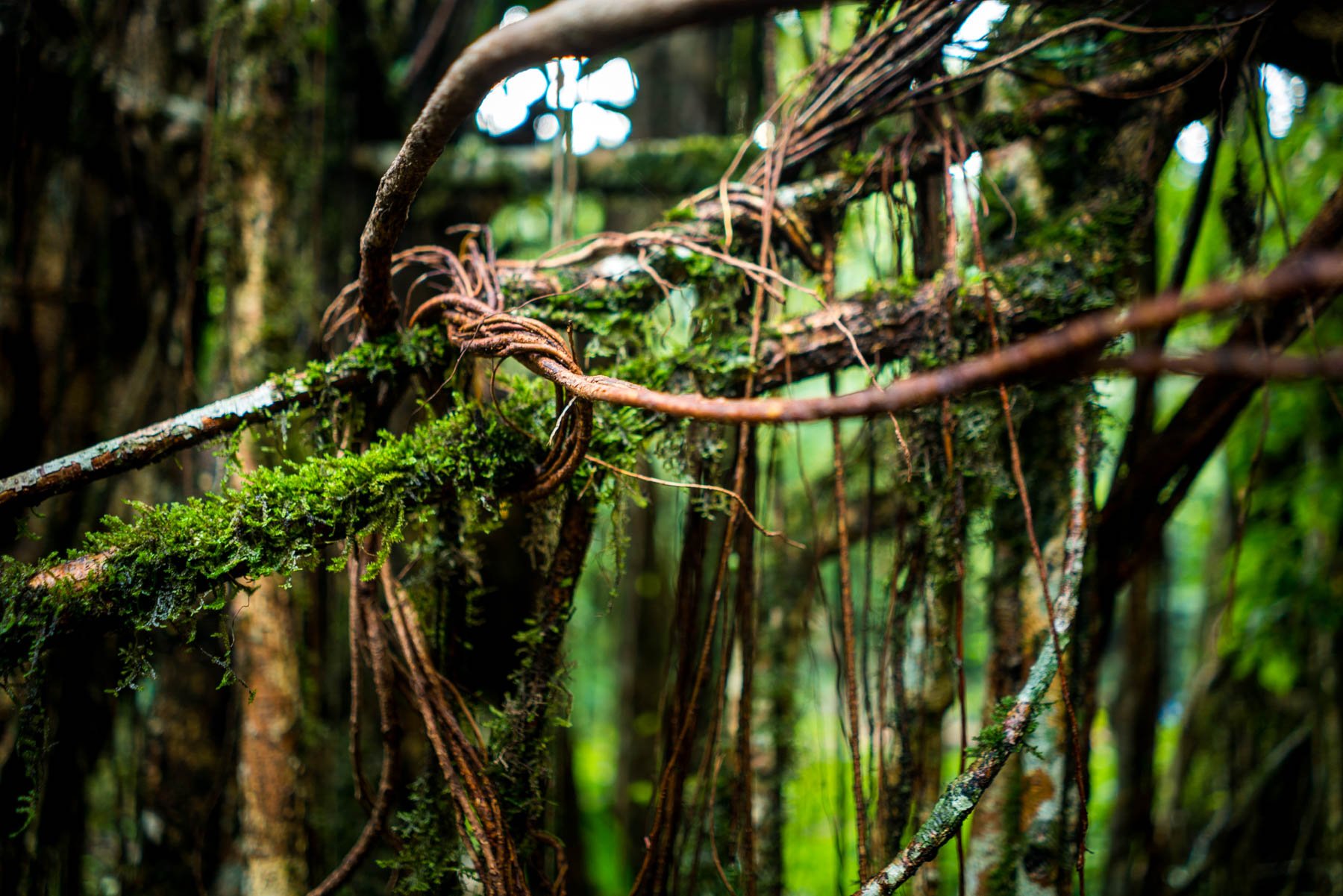
But these days, cables are also used as the base for some root bridges.
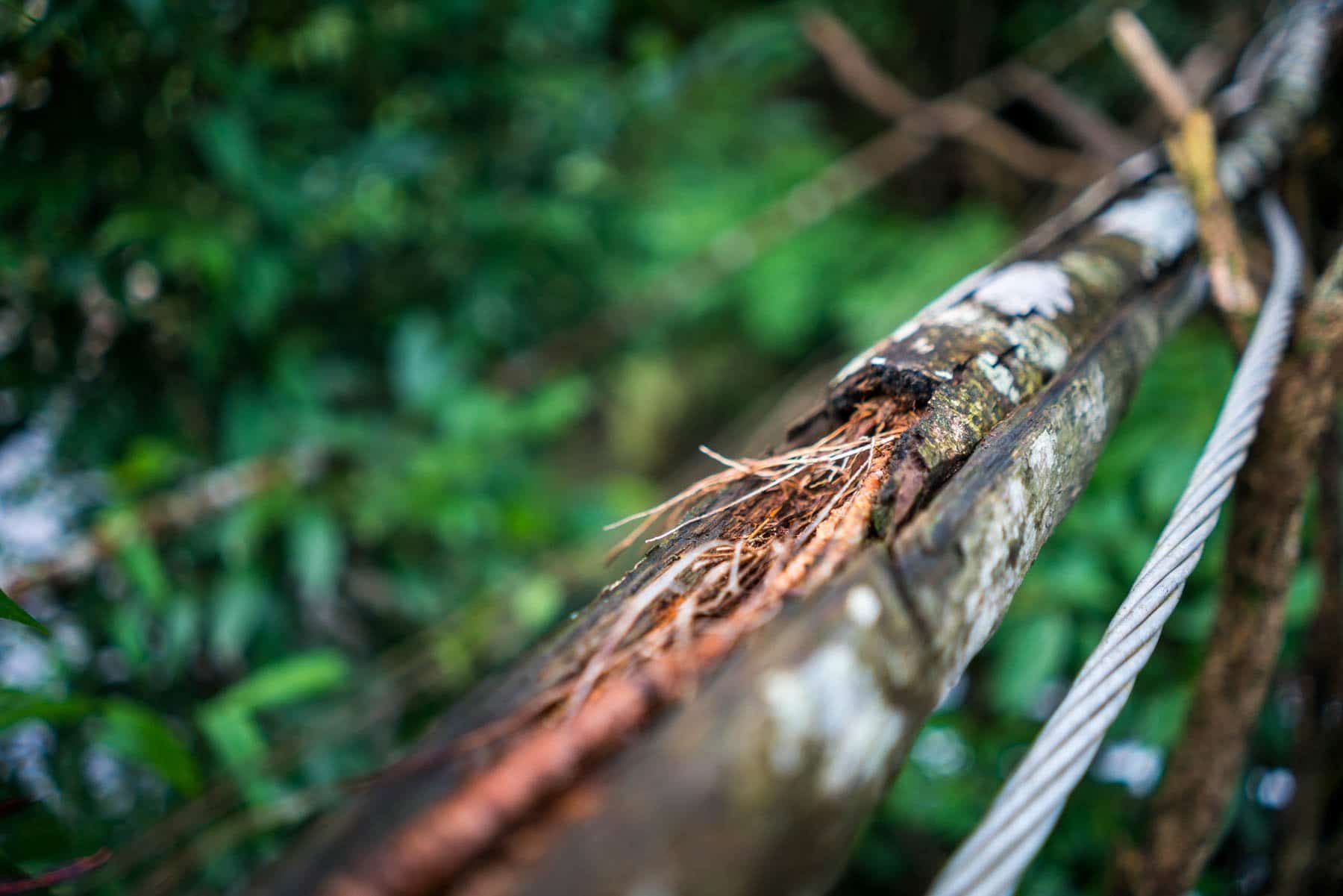
How to trek to Nongriat and the living root bridges
There are root bridges scattered all throughout Meghalaya, the bridge in Mawlynnong being the most famous. We chose to skip the crowds and visit the grandest of them all: Umshiang, the double decker bridge in the village of Nongriat, and one of India’s finest offbeat destinations.
Getting there, however, is no simple task. Though visitors’ ways are guided by a newly-minted cement pathway, the journey to Nongriat is a steep one. For information on getting to Cherrapunjee and then to Nongriat, check out our article on how to get to Cherrapunjee from Shillong.
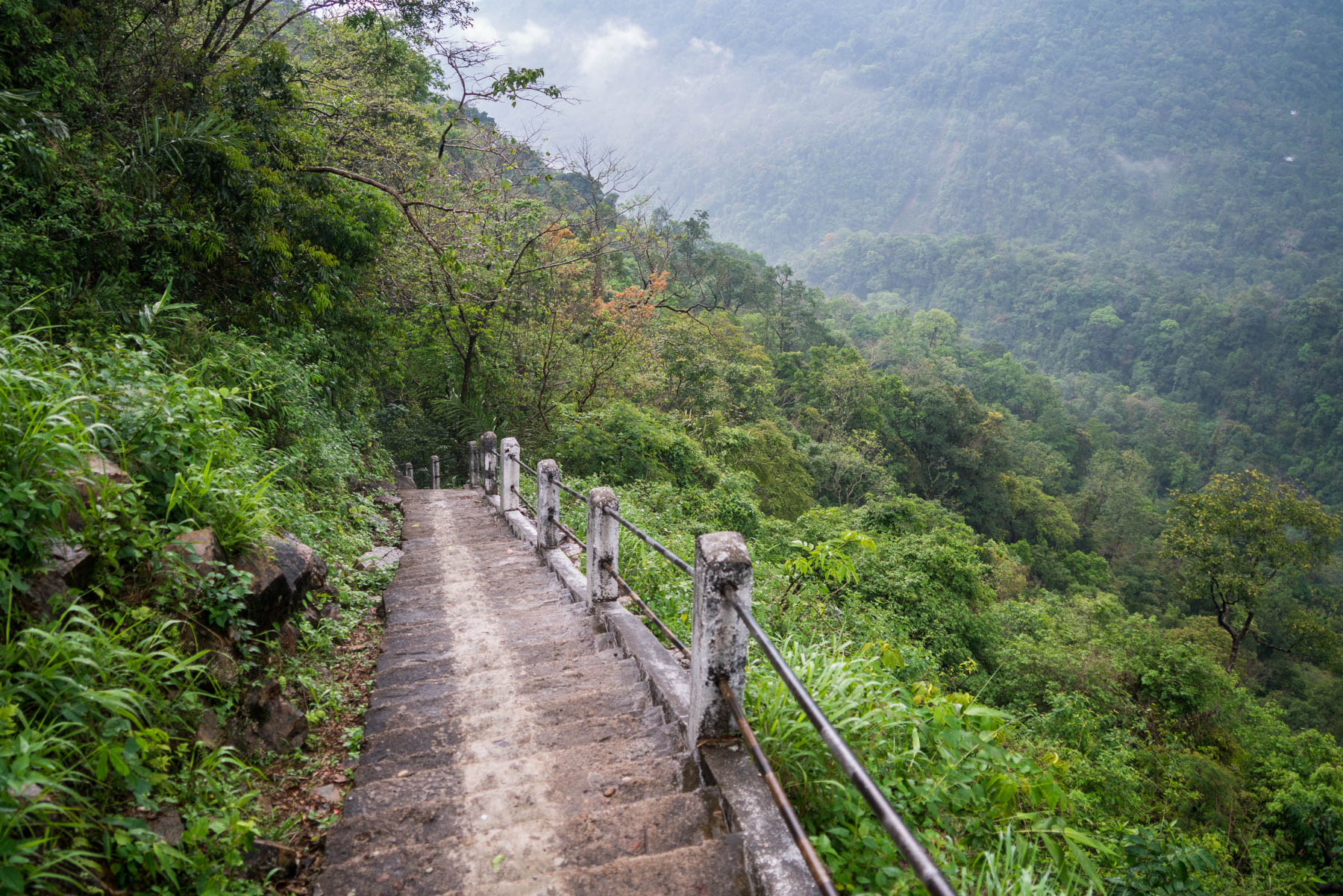
And so our journey begins…
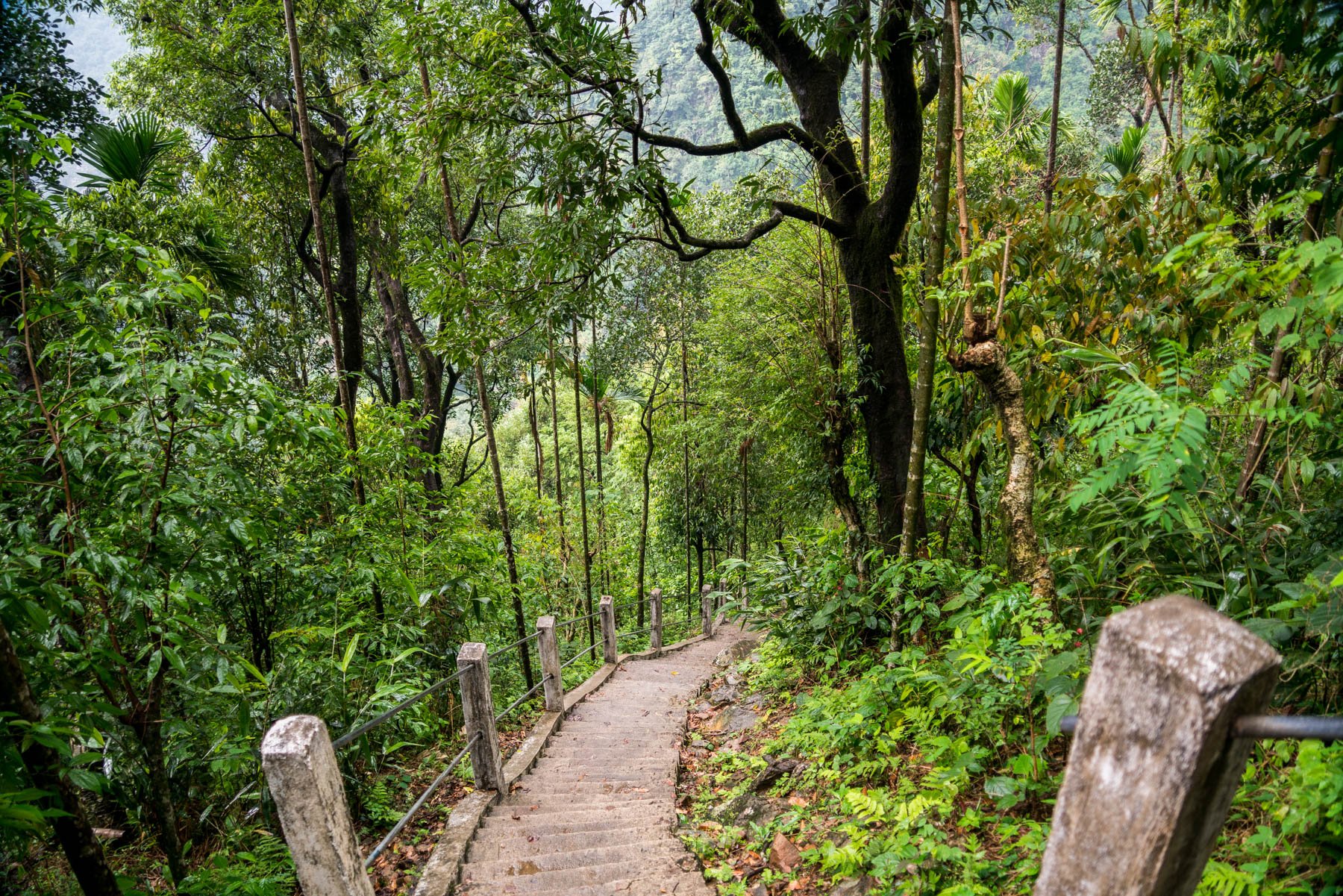
Do look down!
We were plagued by heavy rains as we wound through the forest. Knees wobbled from carrying our packs down the 2,500 stairs, and legs shook as we inched across slippery suspension bridges. But the landscape more than made up for the strain:
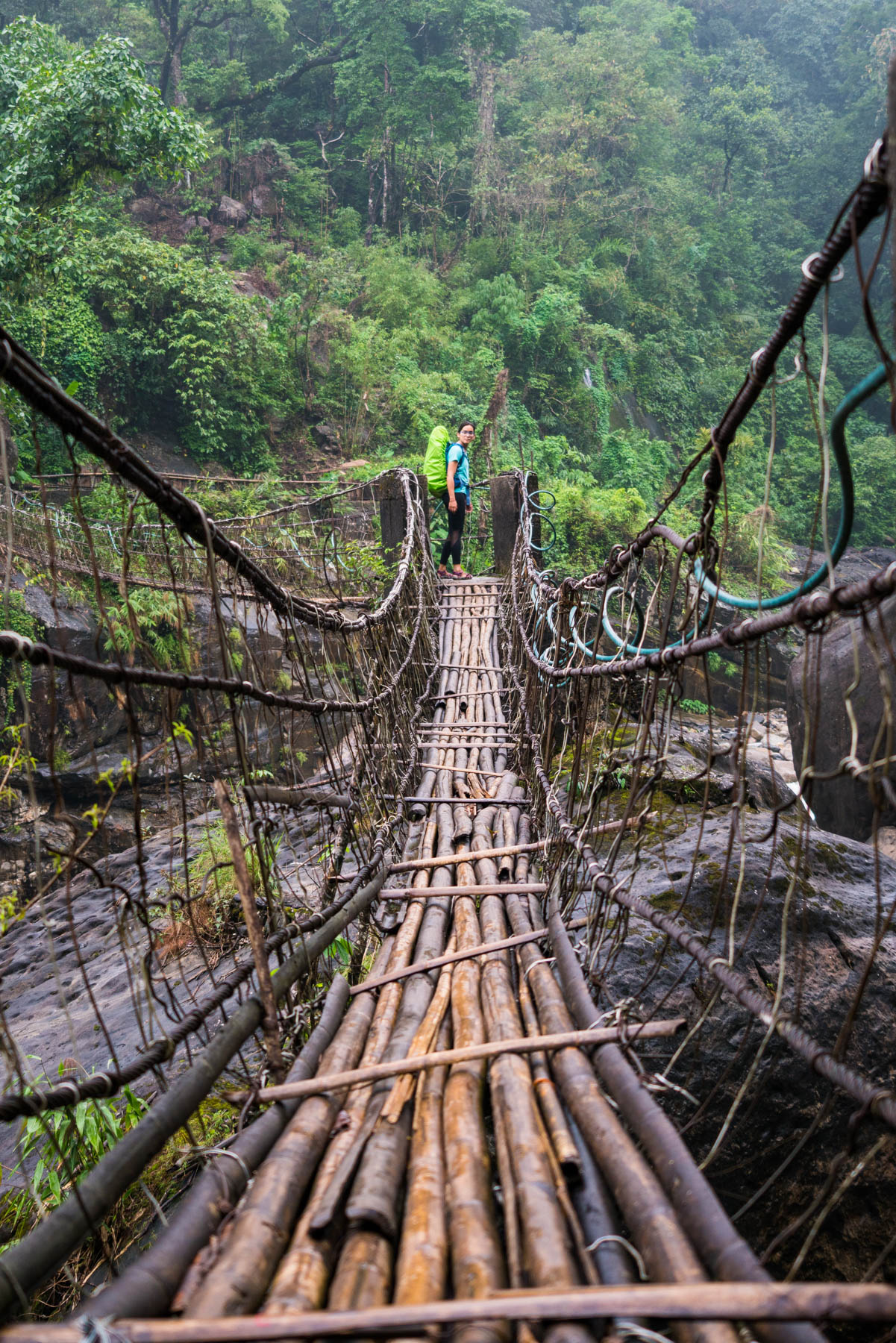
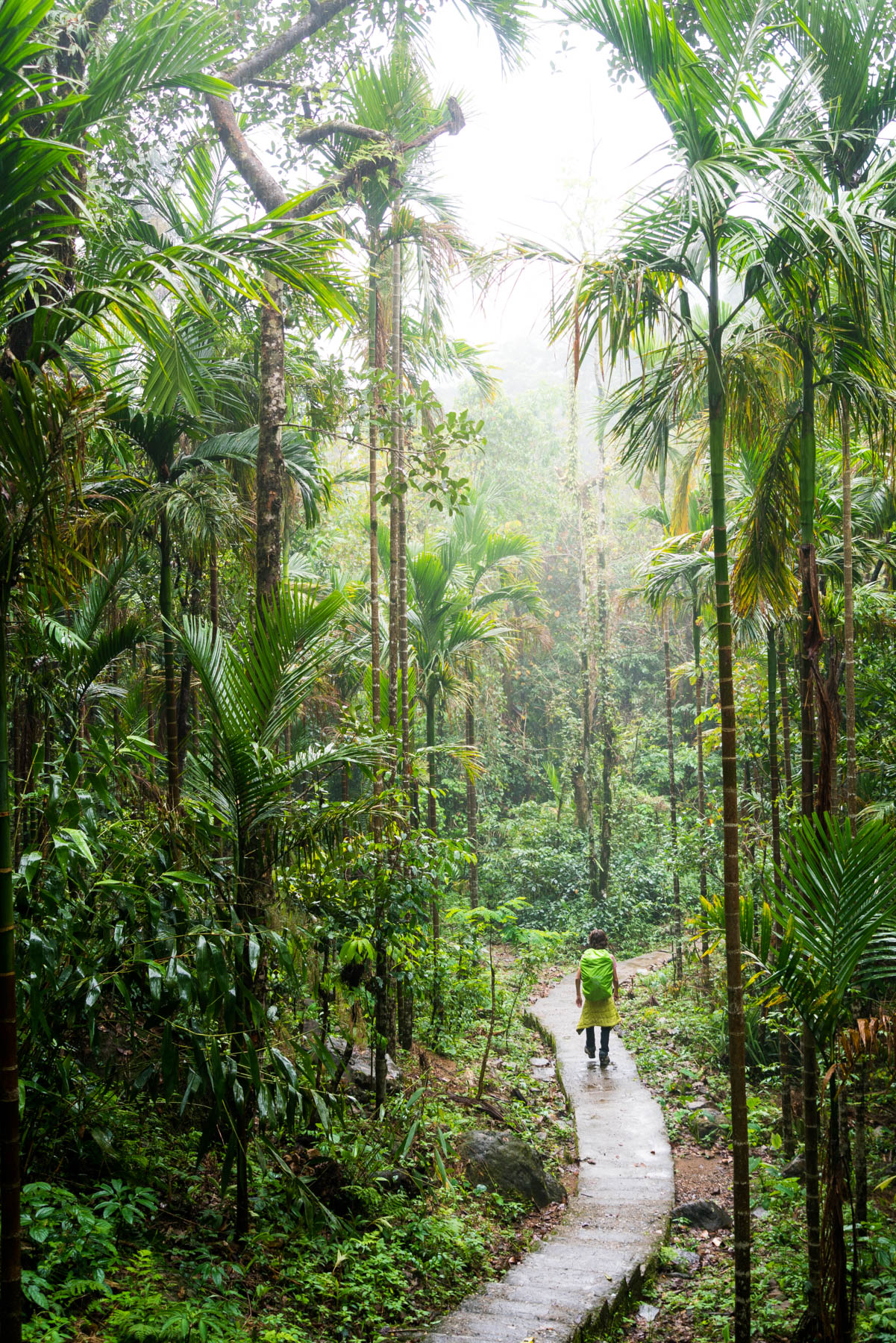
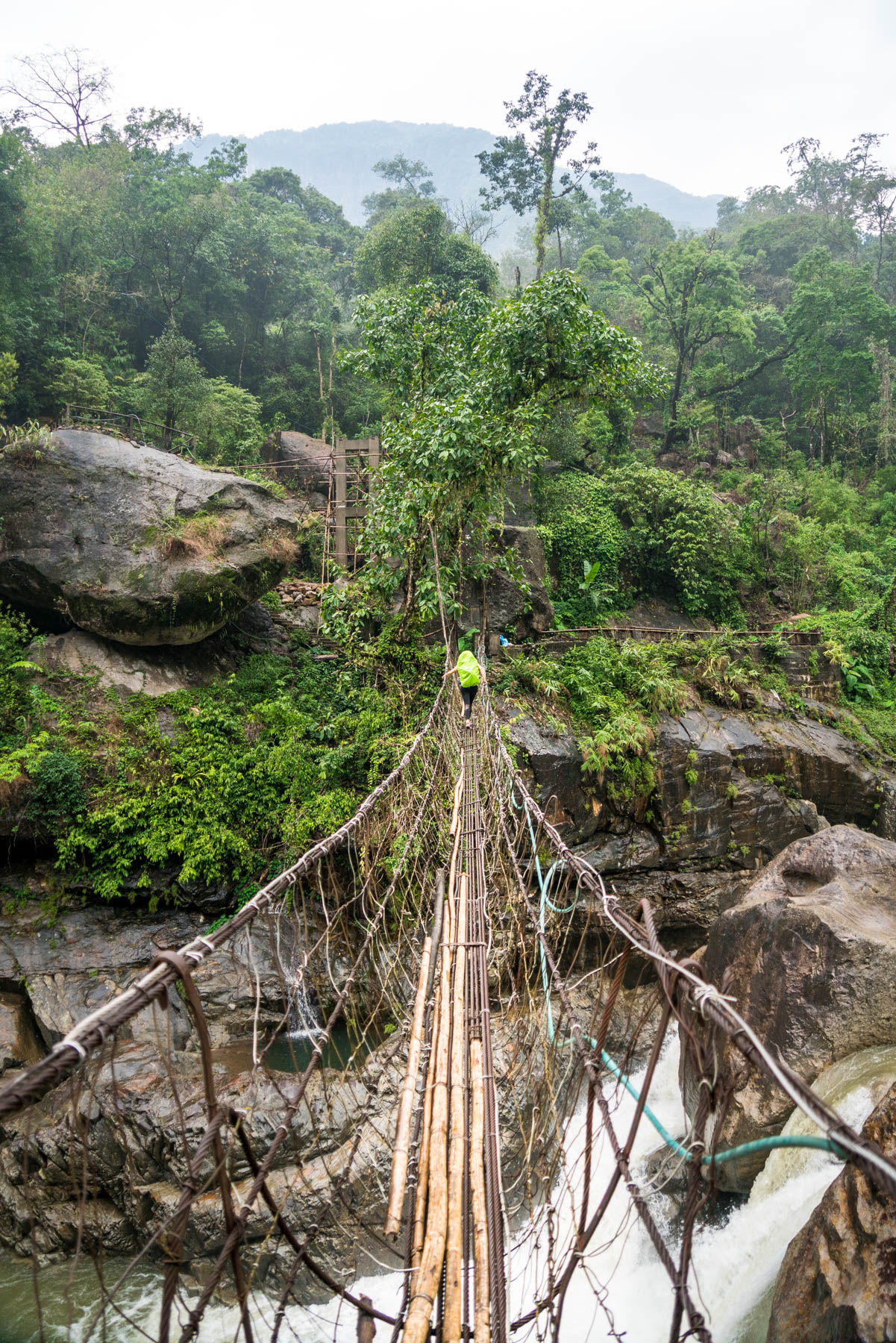
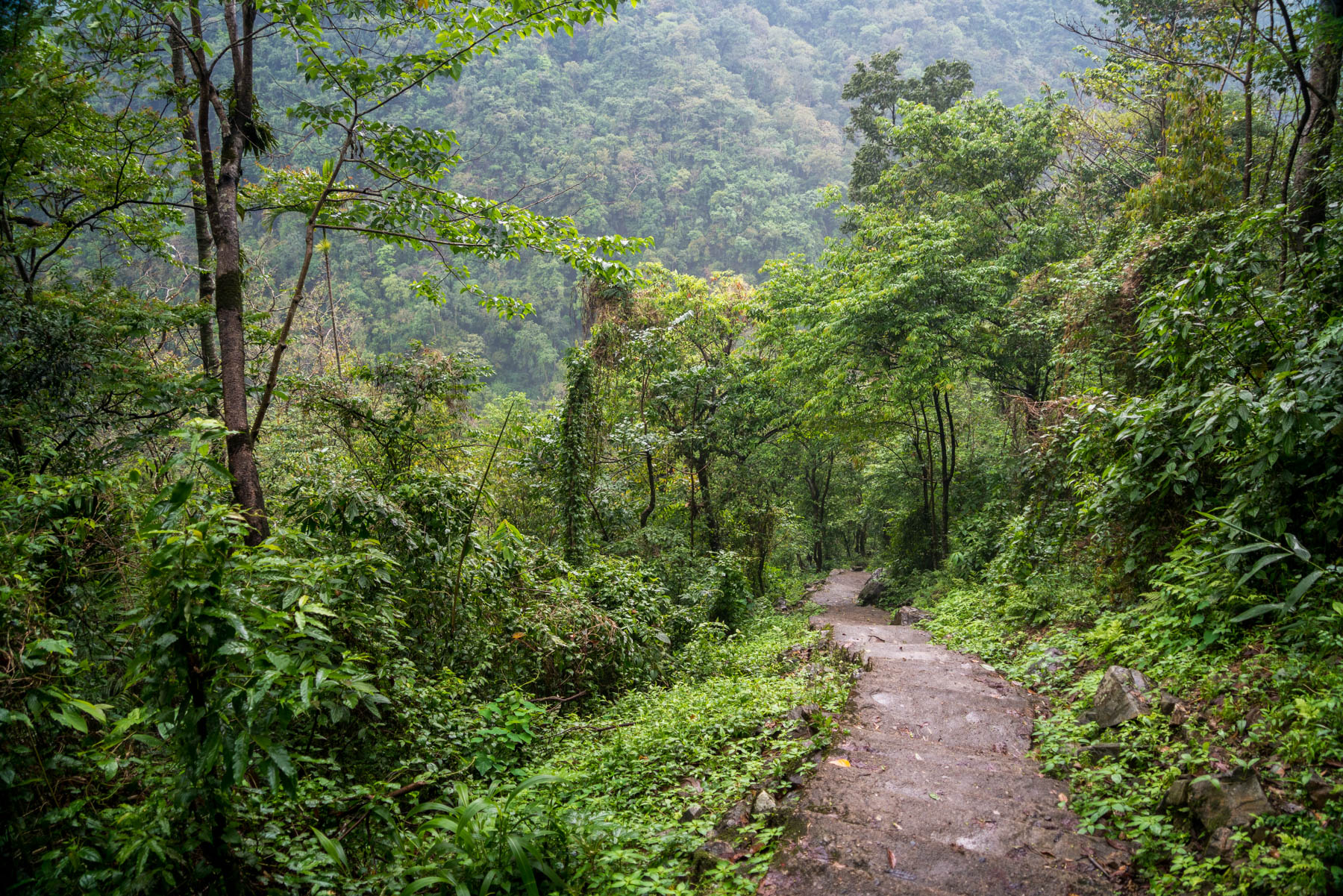
Luckily, the slog was mostly downhill (in this direction, anyway), and in about 1.5 hours, we emerged into the paradise that is Nongriat village, Meghalaya.
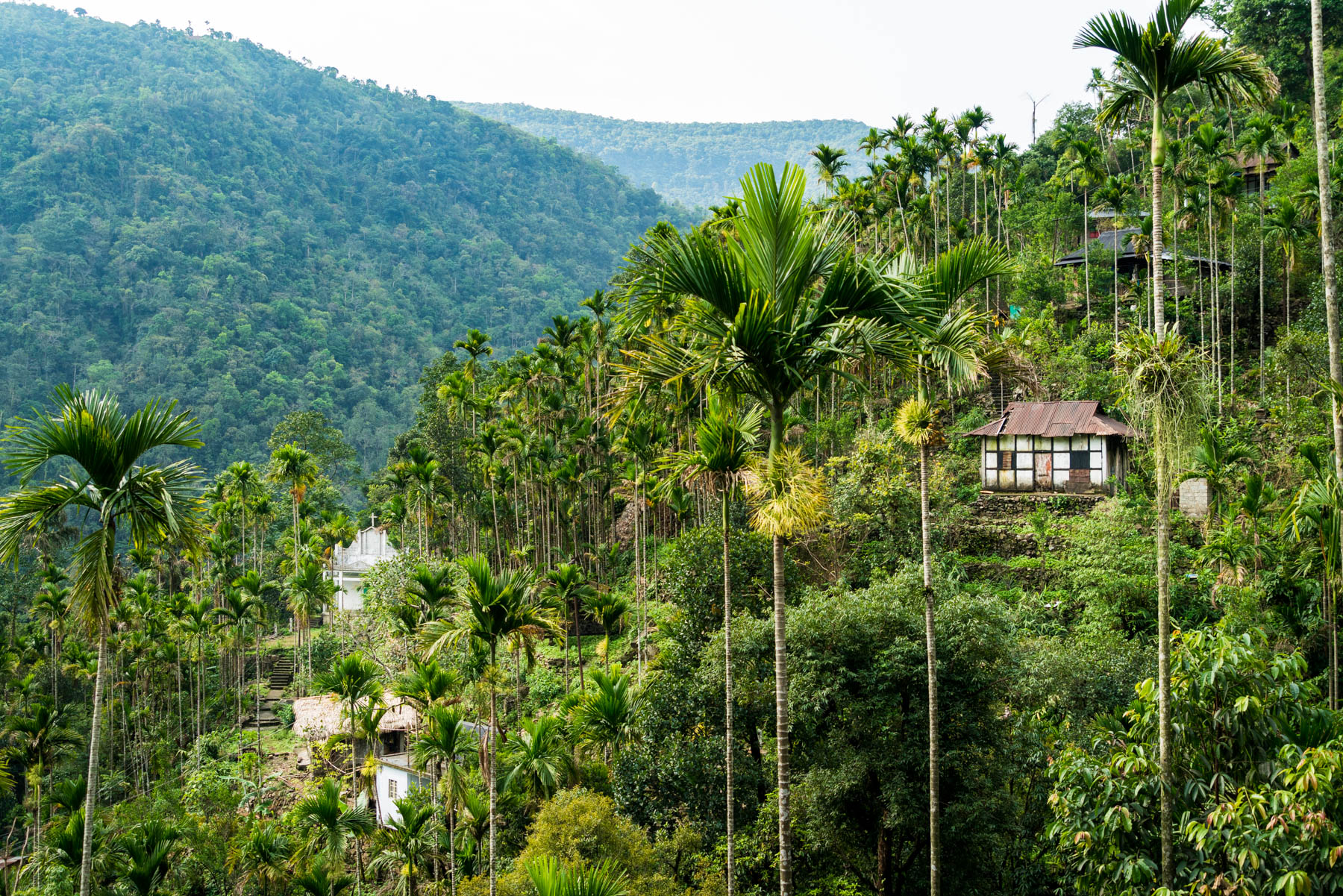
Talk about a house with a view!
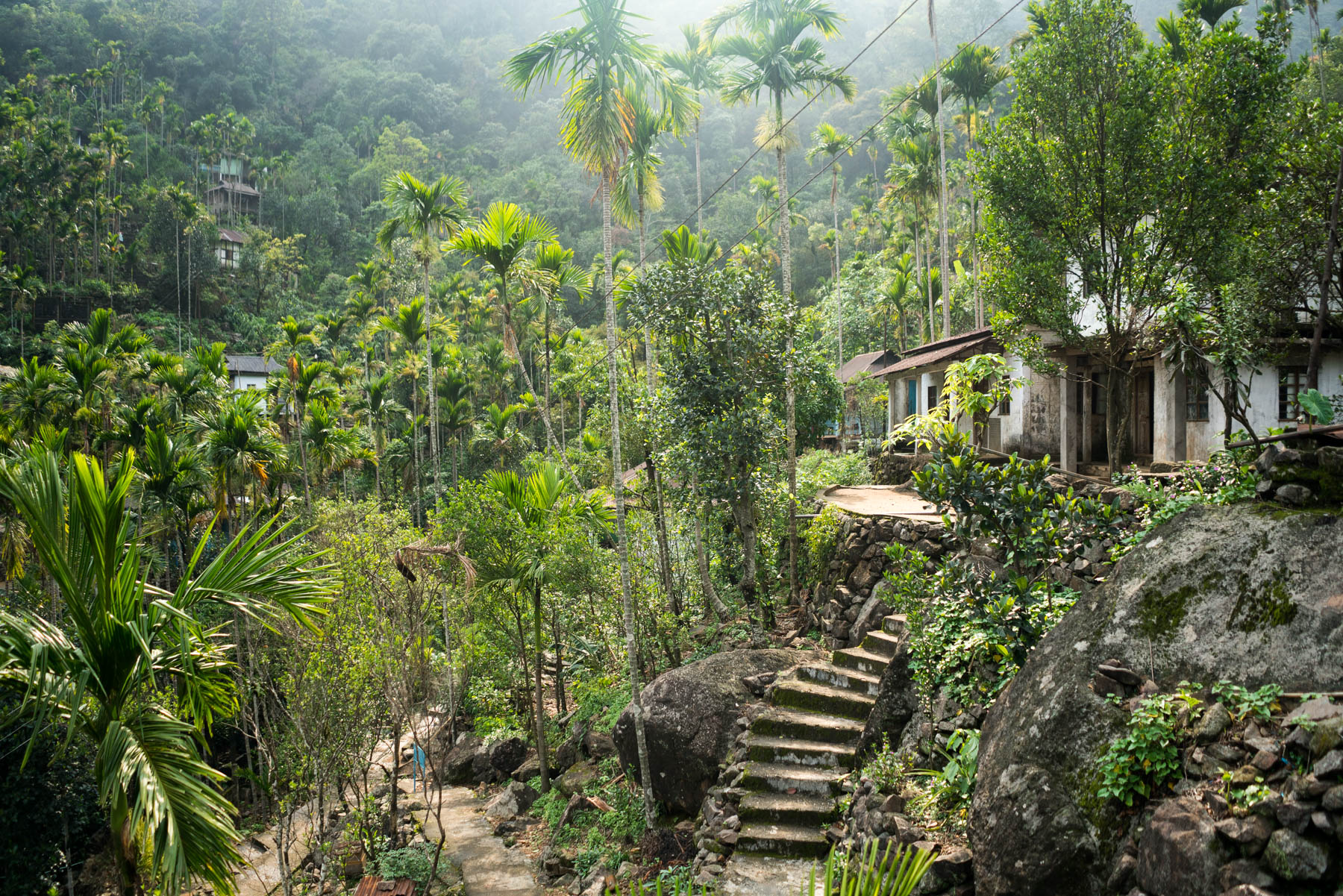
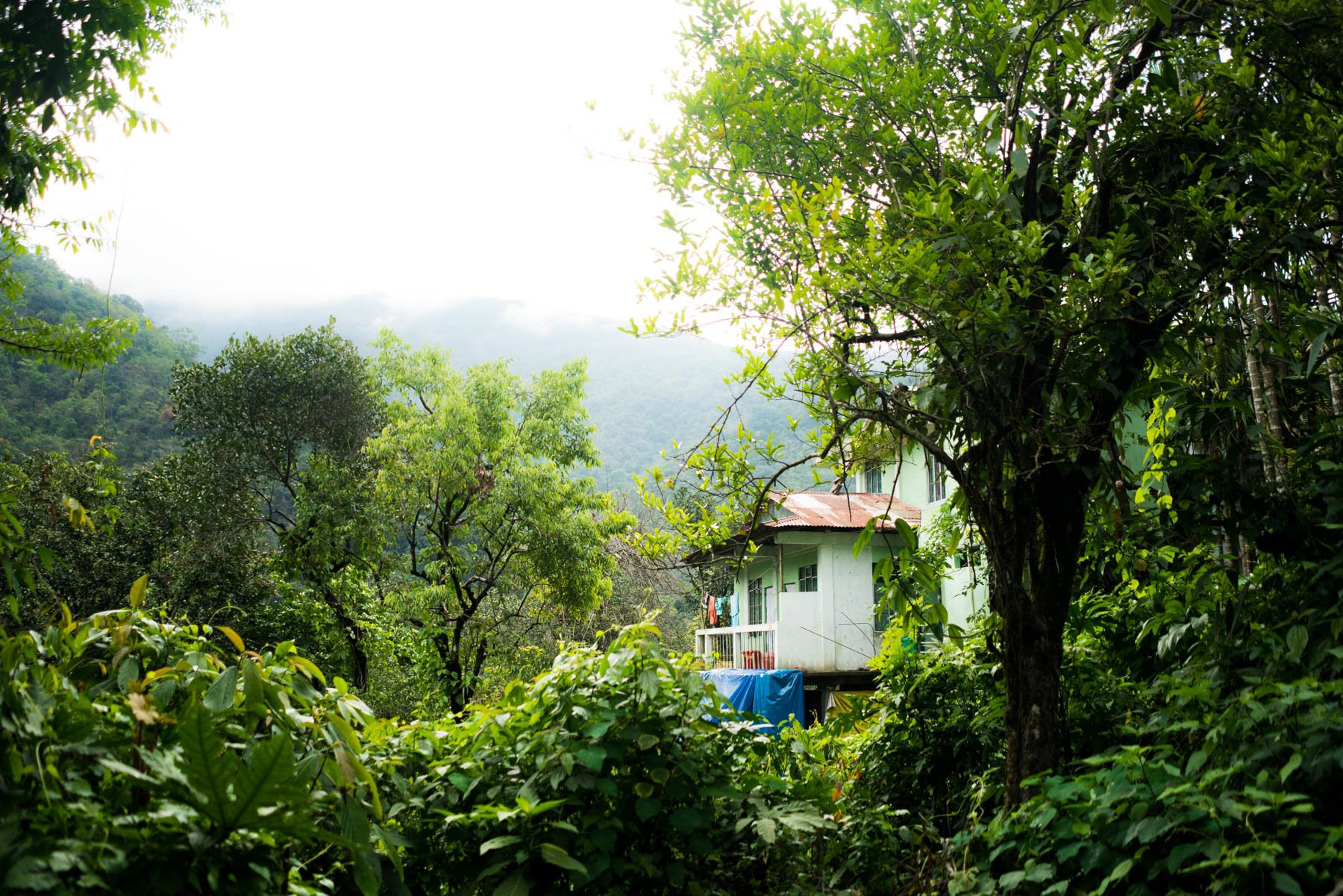
Serene Guesthouse, our temporary home in Nongriat
Torrential downpour trapped us inside for the first day…
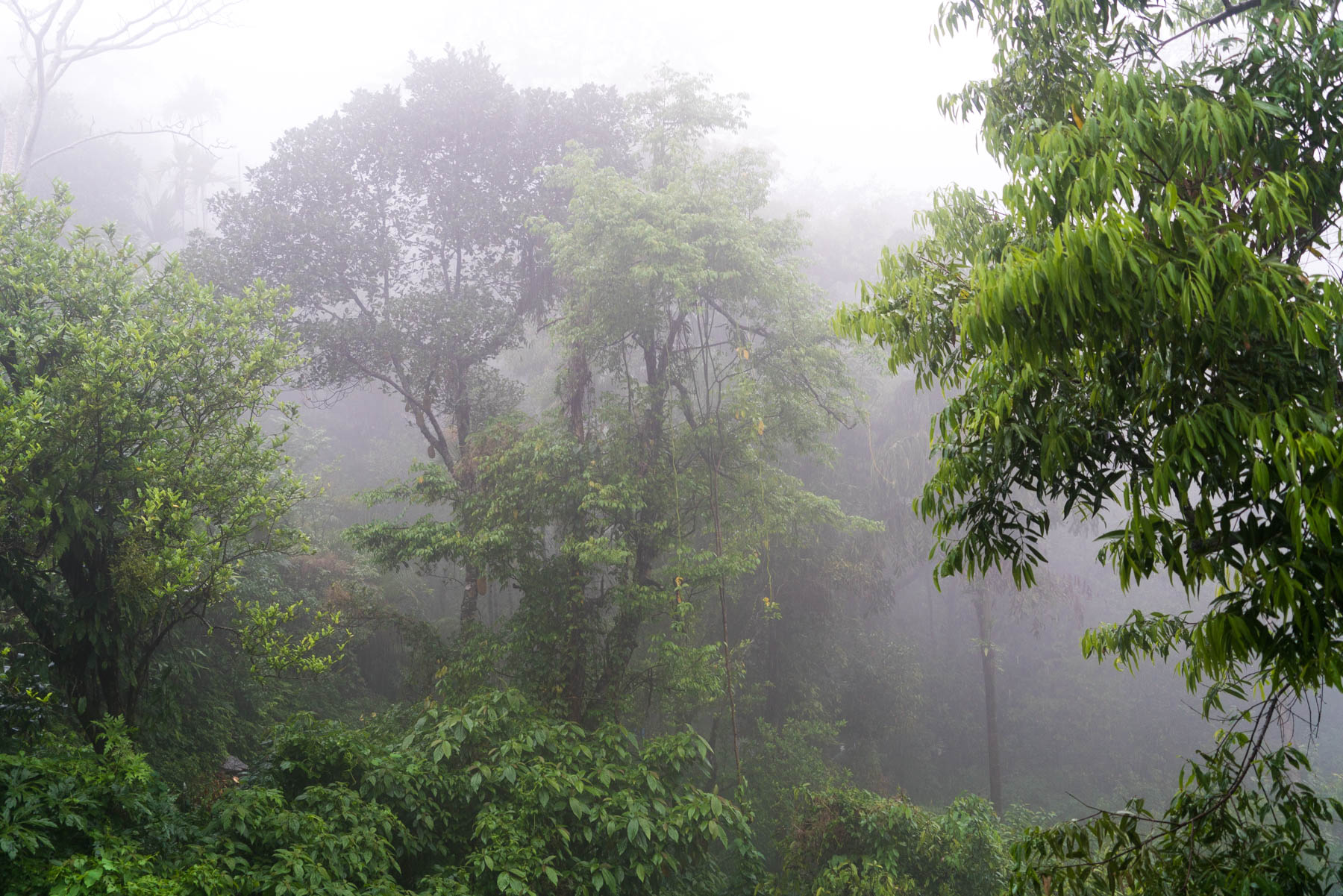
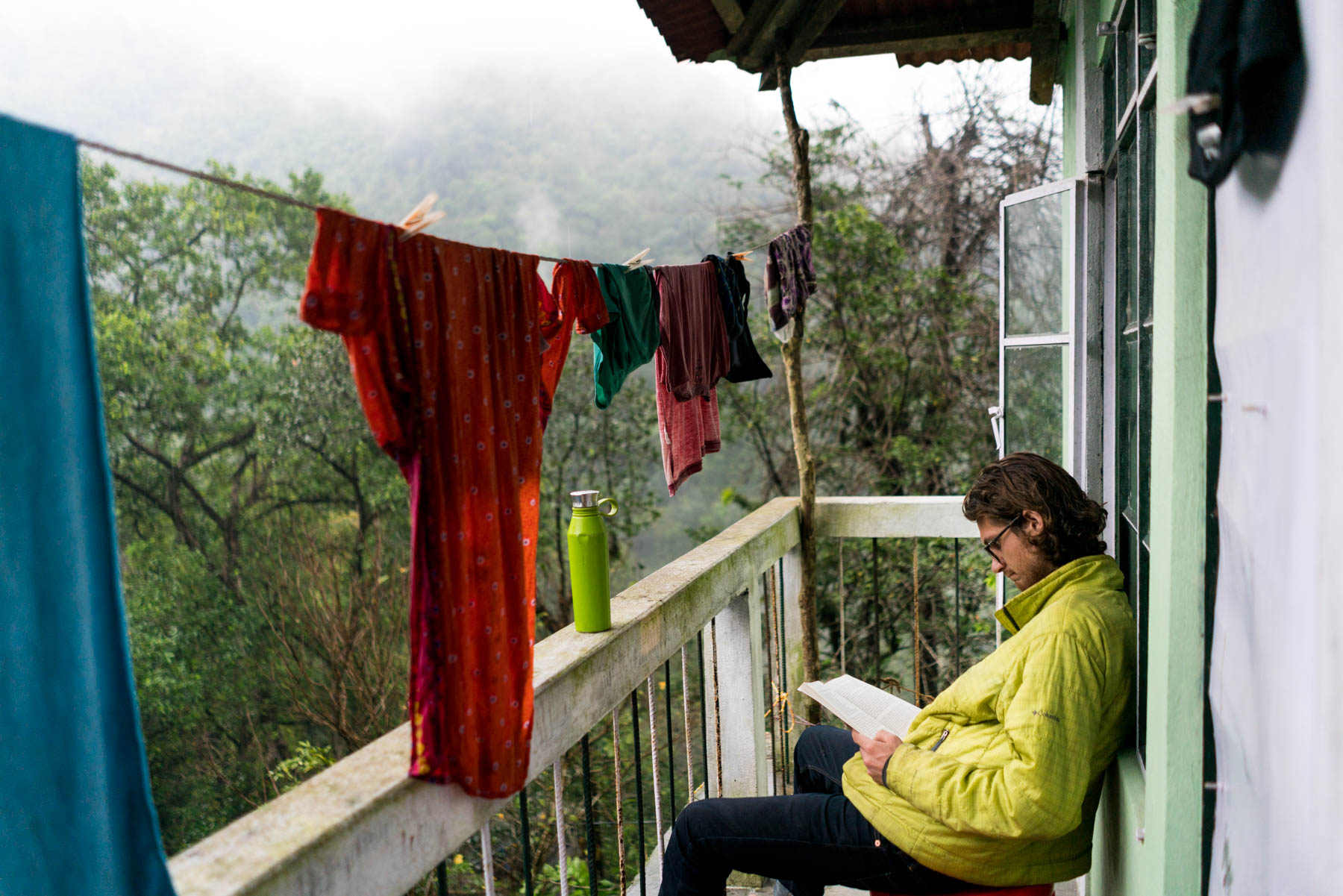
… but with a bit of luck and some dances to the weather gods, the pre-monsoon rains let up enough for us to venture out into the forests surrounding Nongriat village, including a short trek to one of the waterfalls nearby.
The living root bridges of Nongriat
We didn’t have to stray far to find the main attraction. Umshiang, the double decker living root bridge, is only a stone’s throw away from the village of Nongriat.
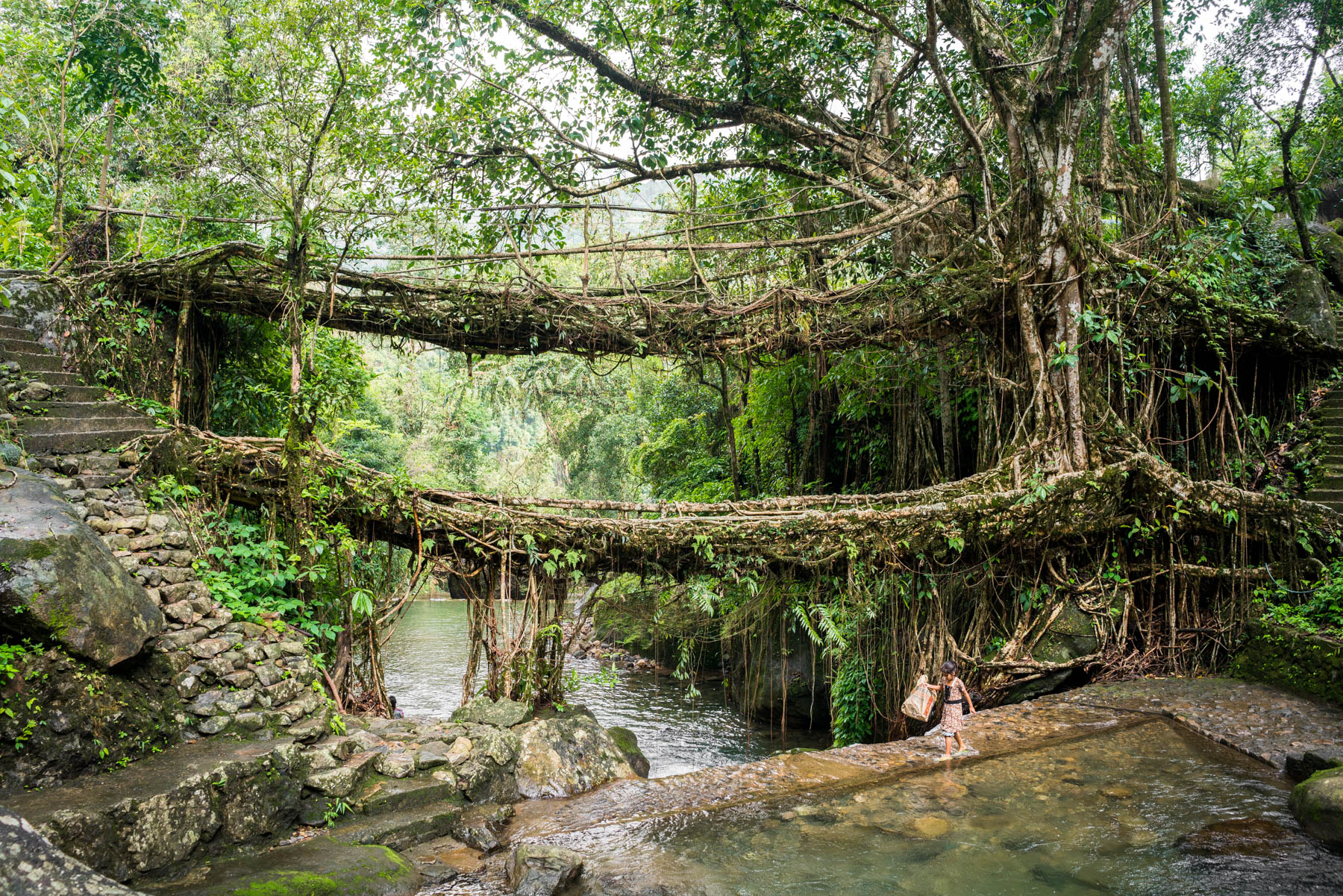
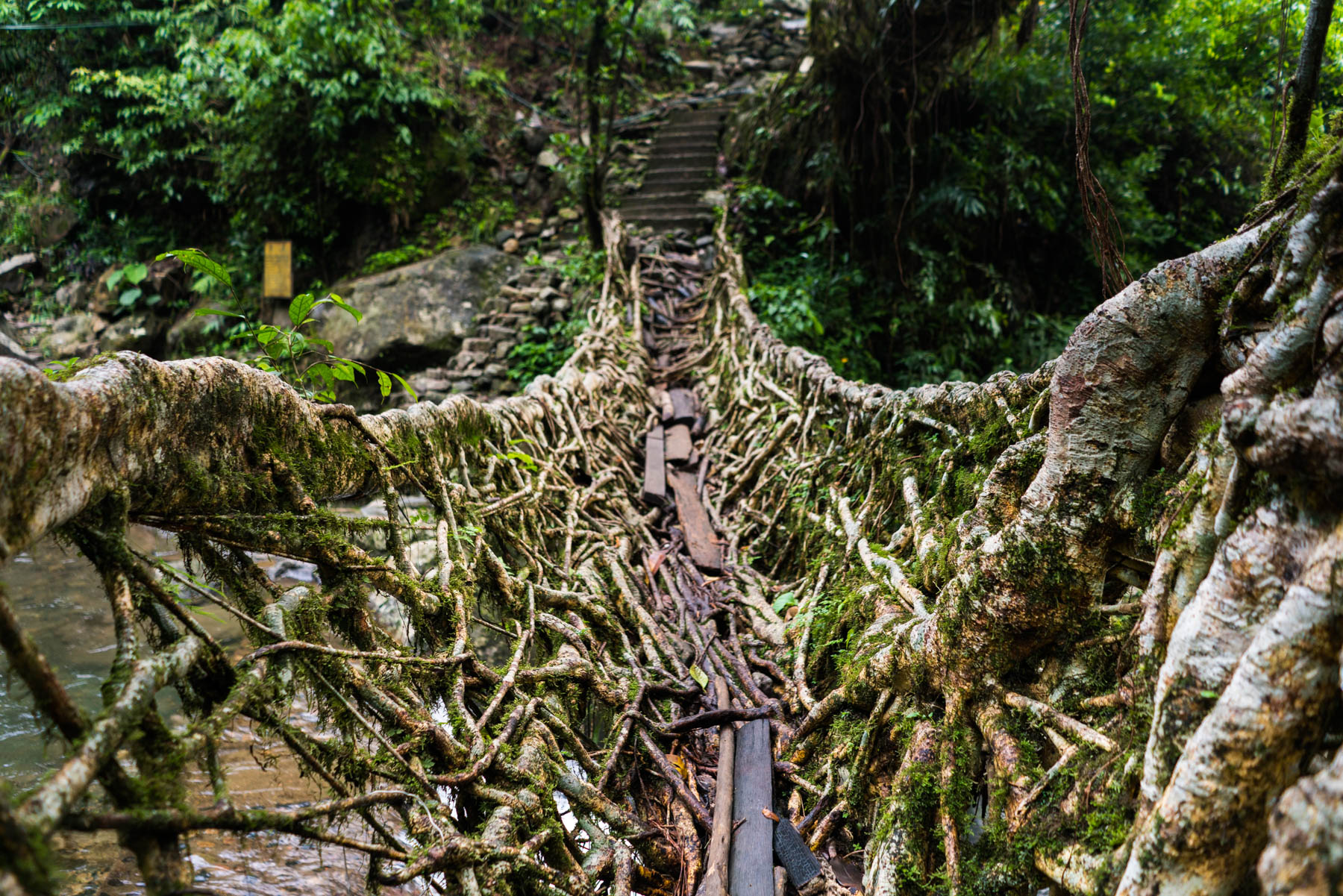
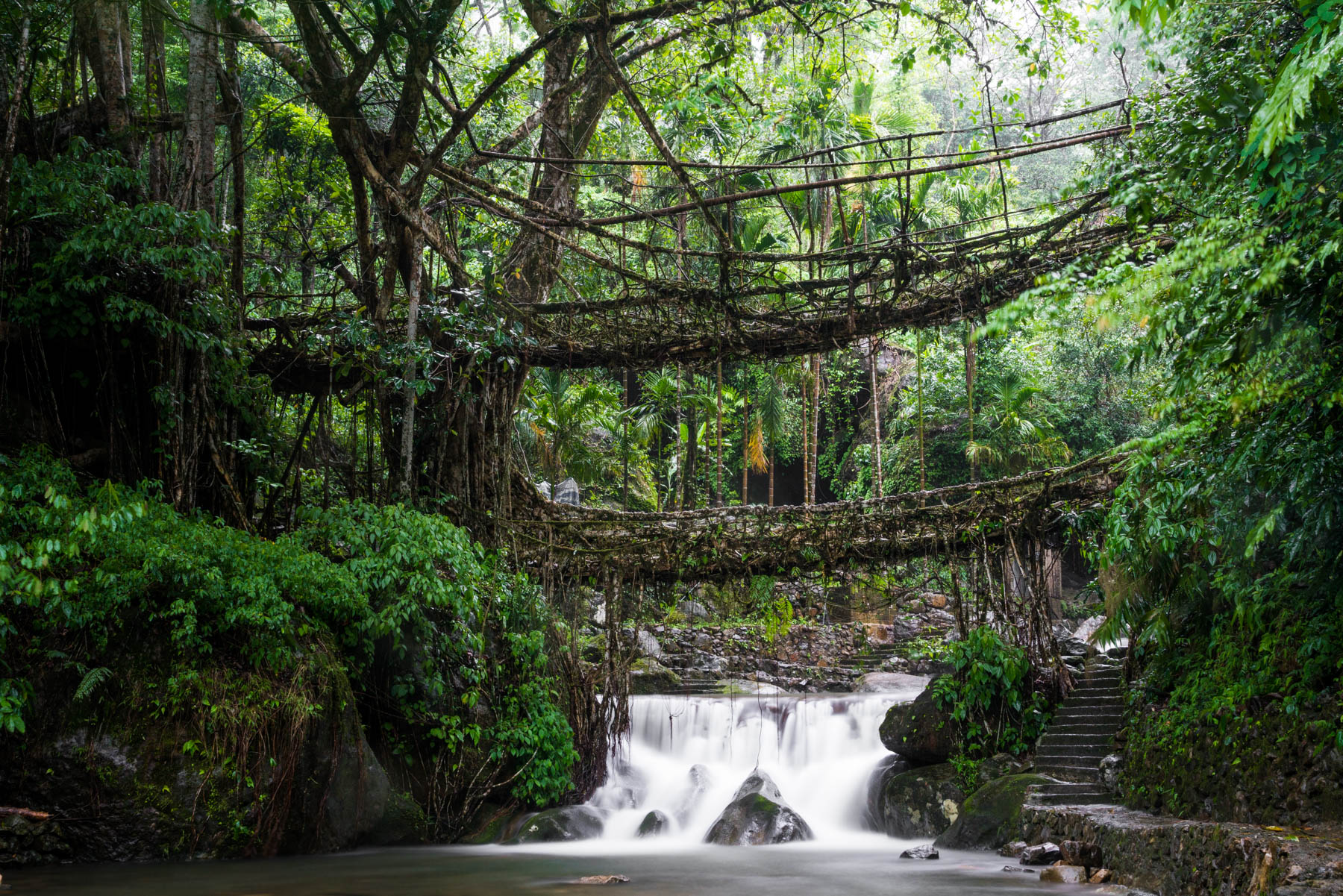
This was taken during some seriously torrential downpour. Sebastiaan held a backpack rain cover over me and the tripod while I set up the shot. #teamwork! Note to selves: purchase umbrella for next time.
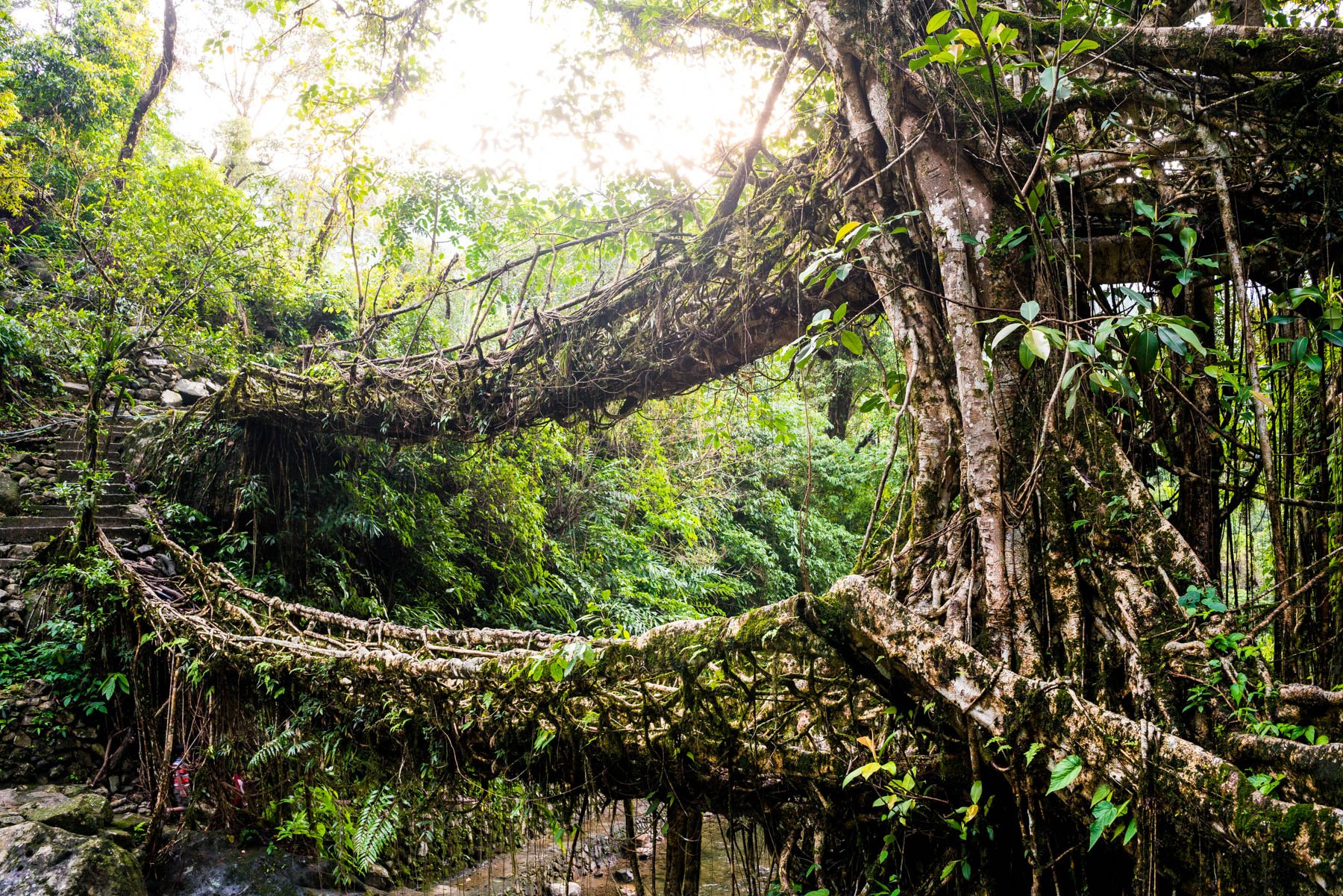
Gah, just look at it! How is this even possible?
But, of course, there’s more to Nongriat than just the double decker bridge! Take the time to hike an extra hour, and you’ll be treated to all kinds of stunning views.
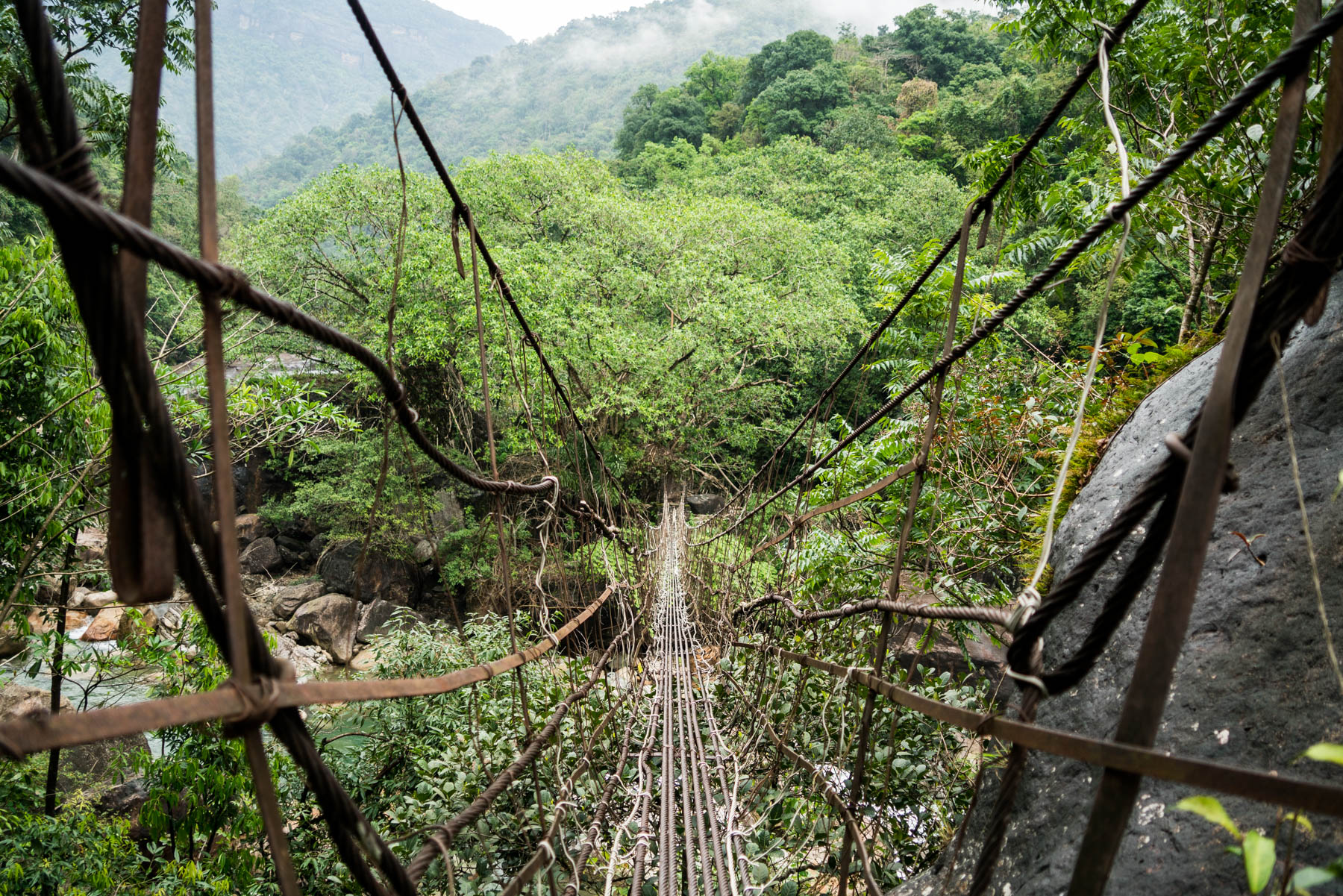
Not sure if heights or tetanus were a bigger concern while crossing this…
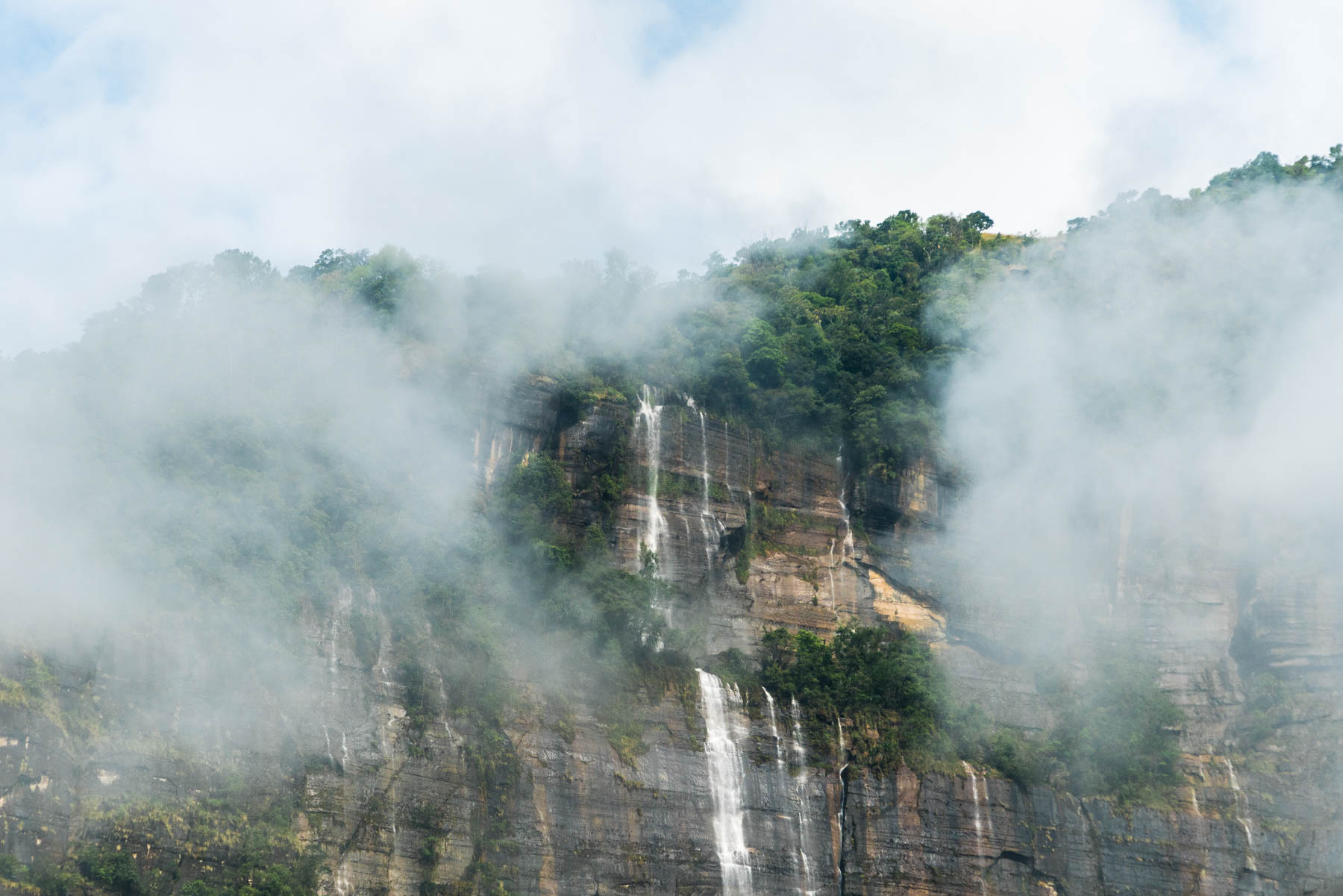
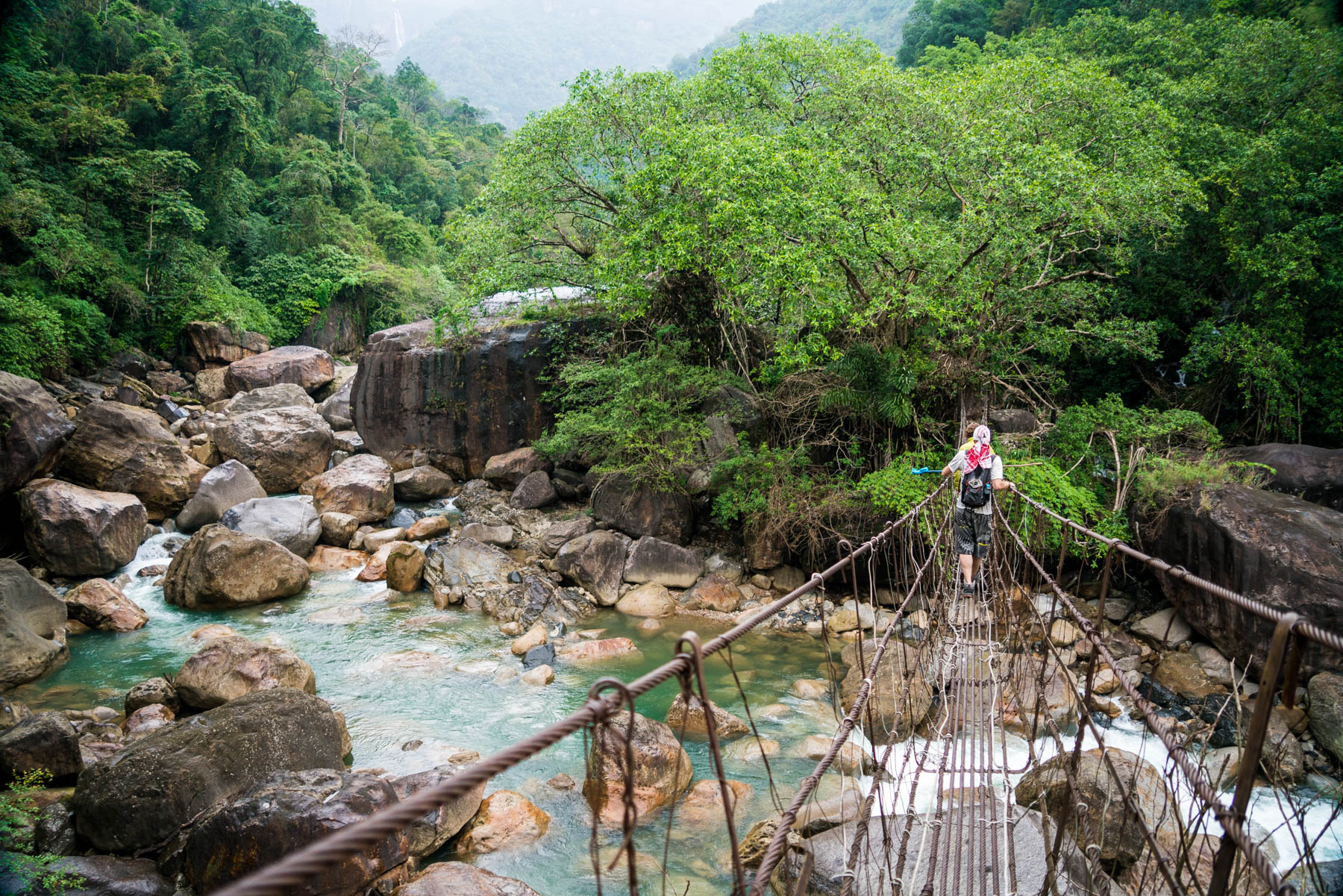
Don’t slip!
… and eventually come to the grand finale: Rainbow Falls.
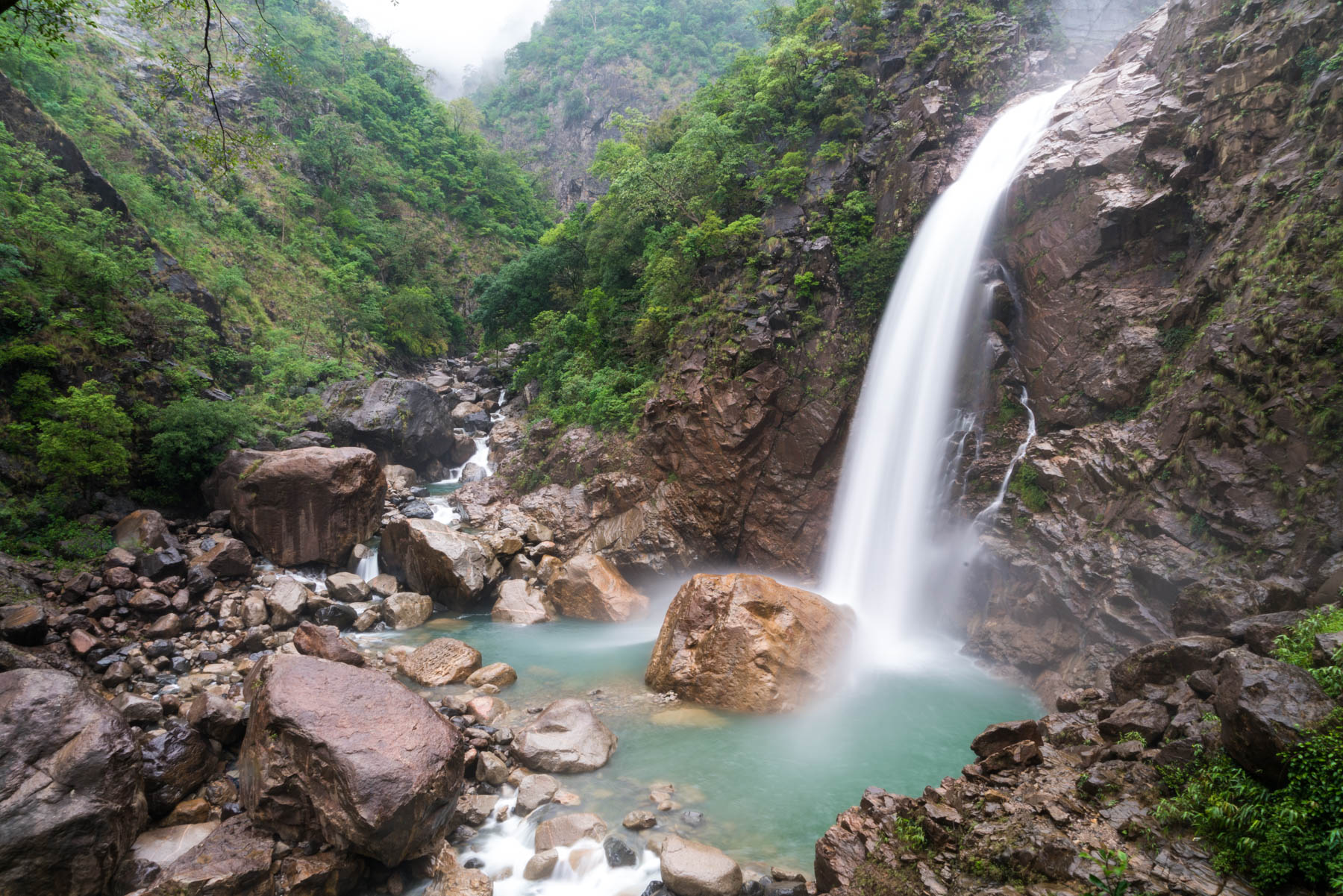
You can go swimming here, too! But beware—the water is not particularly toasty.
No matter what direction you walk, or which way you look, Nongriat is a treat. If you’re traveling Northeast India, mark it on your map for your next Indian adventure!
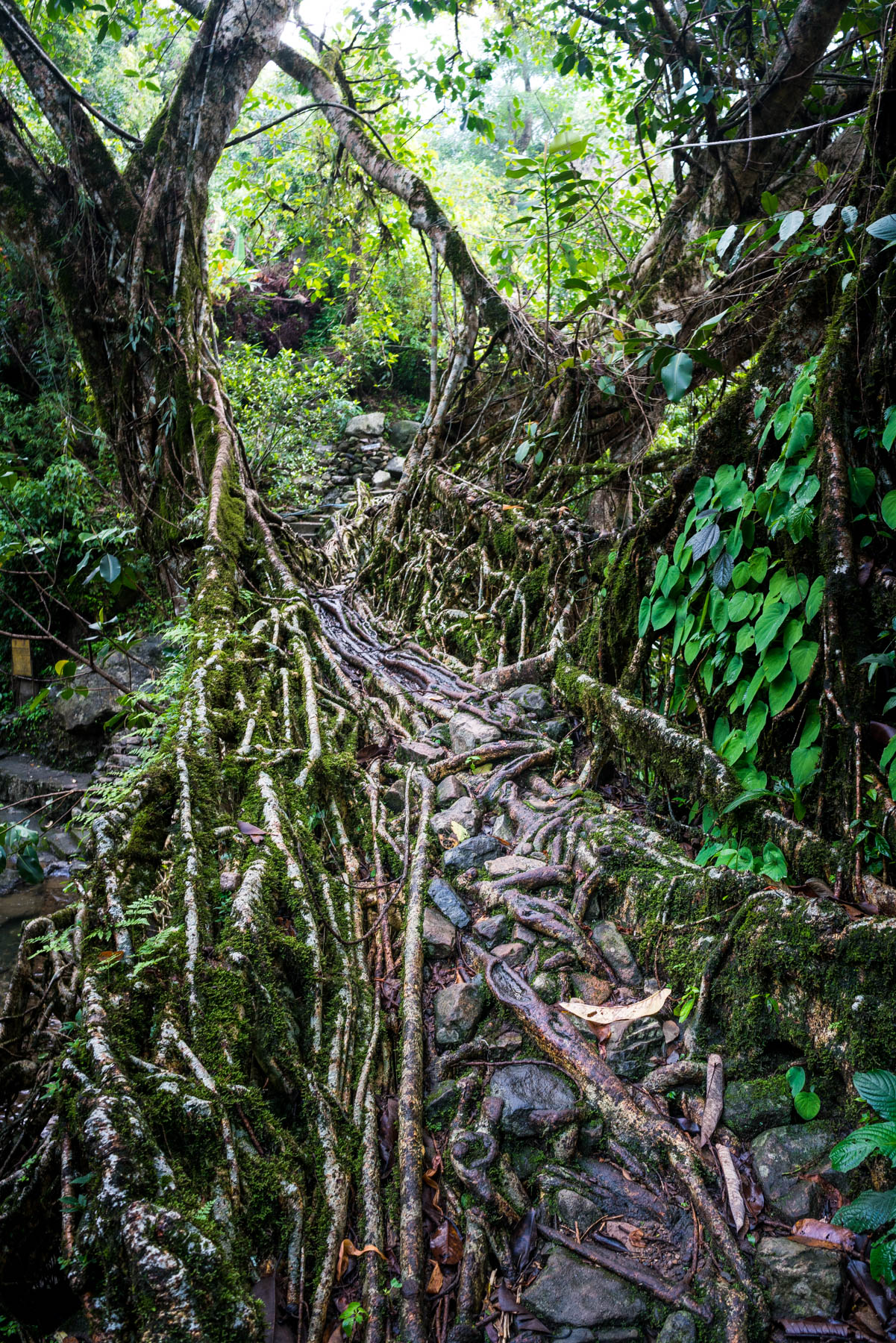
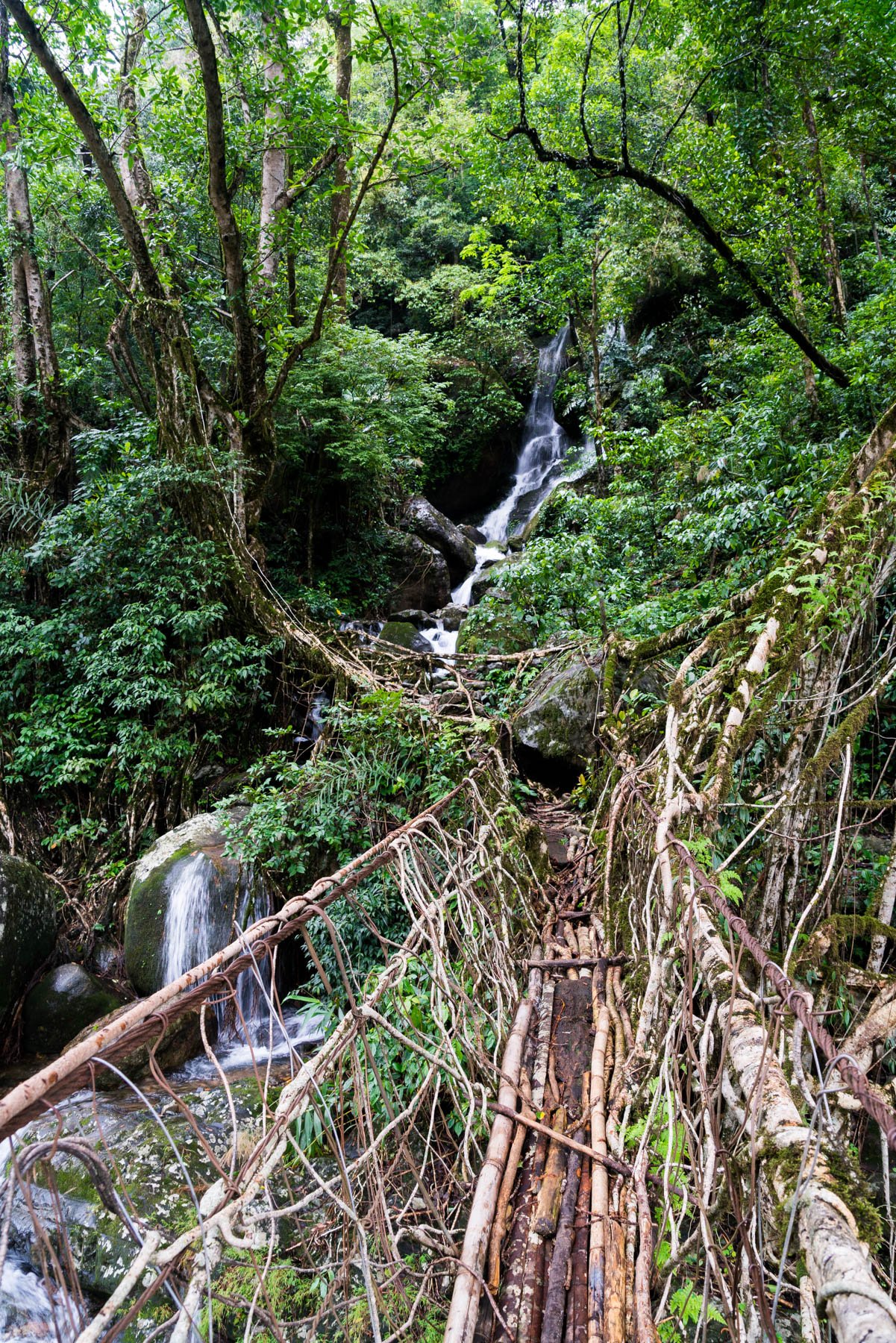
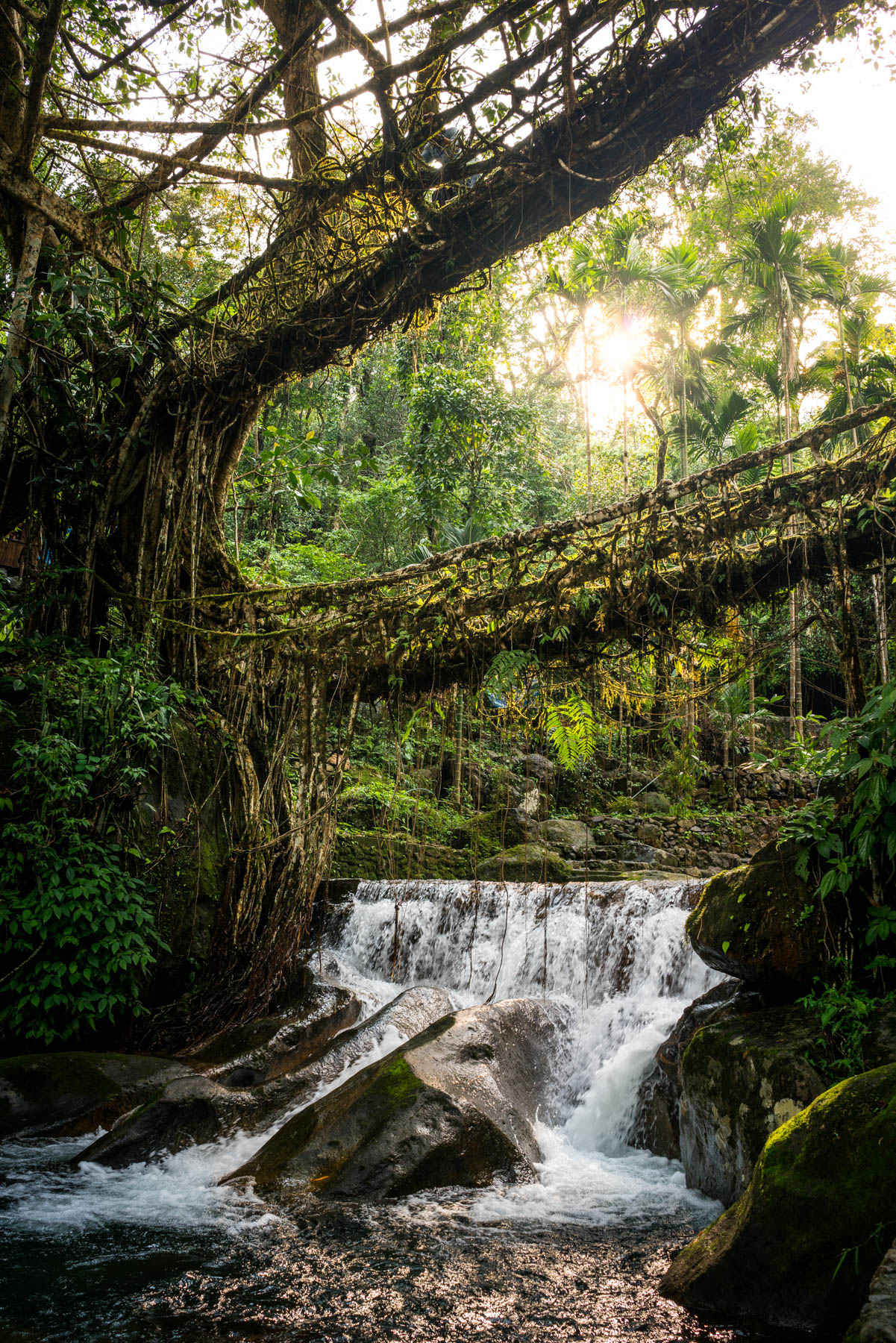
Practical tips for visiting Nongriat
How to get to Nongriat
Most travelers begin their trip to Nongriat in Shillong, the capital city of Meghalaya state.
From there, travelers need to head to Cherrapunji (also known locally as Sohra) first. Shared Sumos and taxis run to the town from Shillong. For more detailed route information, check out our post on how to reach Cherrapunji from Guwahati (Assam) and Shillong by public transportation.
Where to stay in Nongriat
There are several guesthouses in Nongriat, Serene Guesthouse being the most popular choice. At the time of writing in 2017, rooms were 300 Rs per person. Reasonably priced meals and snacking materials are available from the guesthouses.
Tours to Cherrapunji and Nongriat
If you’re short on time, or don’t want to go through the hassle of arranging everything yourself, we recommend Greener Pastures. They’re a knowledgeable responsible tour company based in Northeast India, and offer great tours of Meghalaya as well as other neighboring states.
Extra tips for Nongriat and visiting the living root bridges
Bring an umbrella and a cover for whatever bags you have. Serious downpour is a good possibility, and you don’t want your valuables to get wet! Plastic bags are, for once, your friend. See our monsoon travel packing list for more packing tips. If you want to know more about the Indian state, check out this backpacking guide to Meghalaya.
Responsible travel in Nongriat
Nongriat is many things: a testament to human ingenuity, a peaceful natural environment, a home to many Khasi people. All of those demand respect. When visiting Nongriat, please treat the environment as you would your own home.
- Do not throw waste on the ground. Either bring it back to your guesthouse or carry it home with you to dispose of in the cities. Khasi people go to great lengths to take care of the environment, but tourists have the power to ruin it. Don’t be that person.
- Treat local people with respect. Ask permission before taking photos of anyone in Nongriat. Speak with them, don’t boss them around. Listen to their stories, and respect their advice. They know the land better than you.
- Don’t make too much noise. Nature has its own songs to sing, you don’t need to be blasting music in the middle of the night. Enjoy the peace.
Read more: 27 easy ways to travel more responsibly
More blog posts on travel in Northeast India
- Why you need to travel in Northeast India
- Backpacker’s guide to Arunachal Pradesh
- Majuli, India’s disappearing island
- Rolling hills and flowers galore in Dzukou Valley, Nagaland
- Junk and Jesus in Longwa, Nagaland
- Loktak Lake, jewel of Manipur
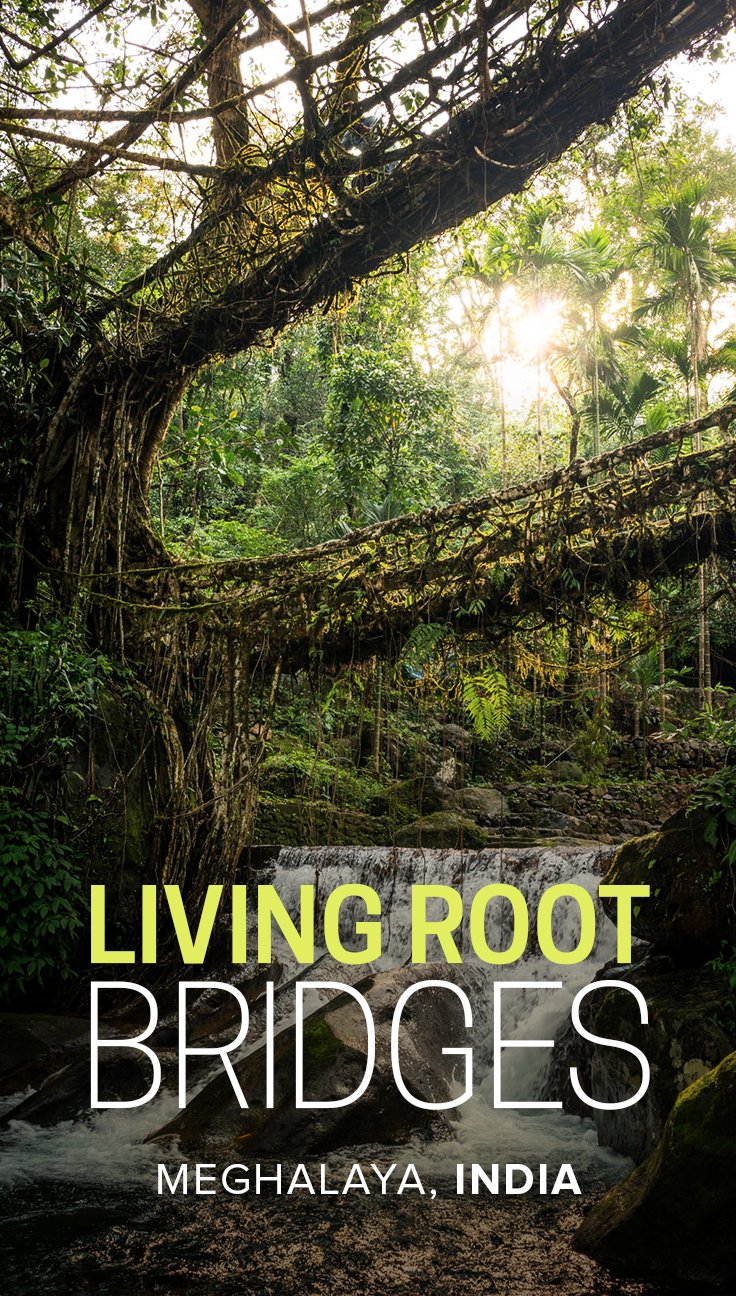

In loving memory of Dr. BJF. I know you would’ve been all over this.
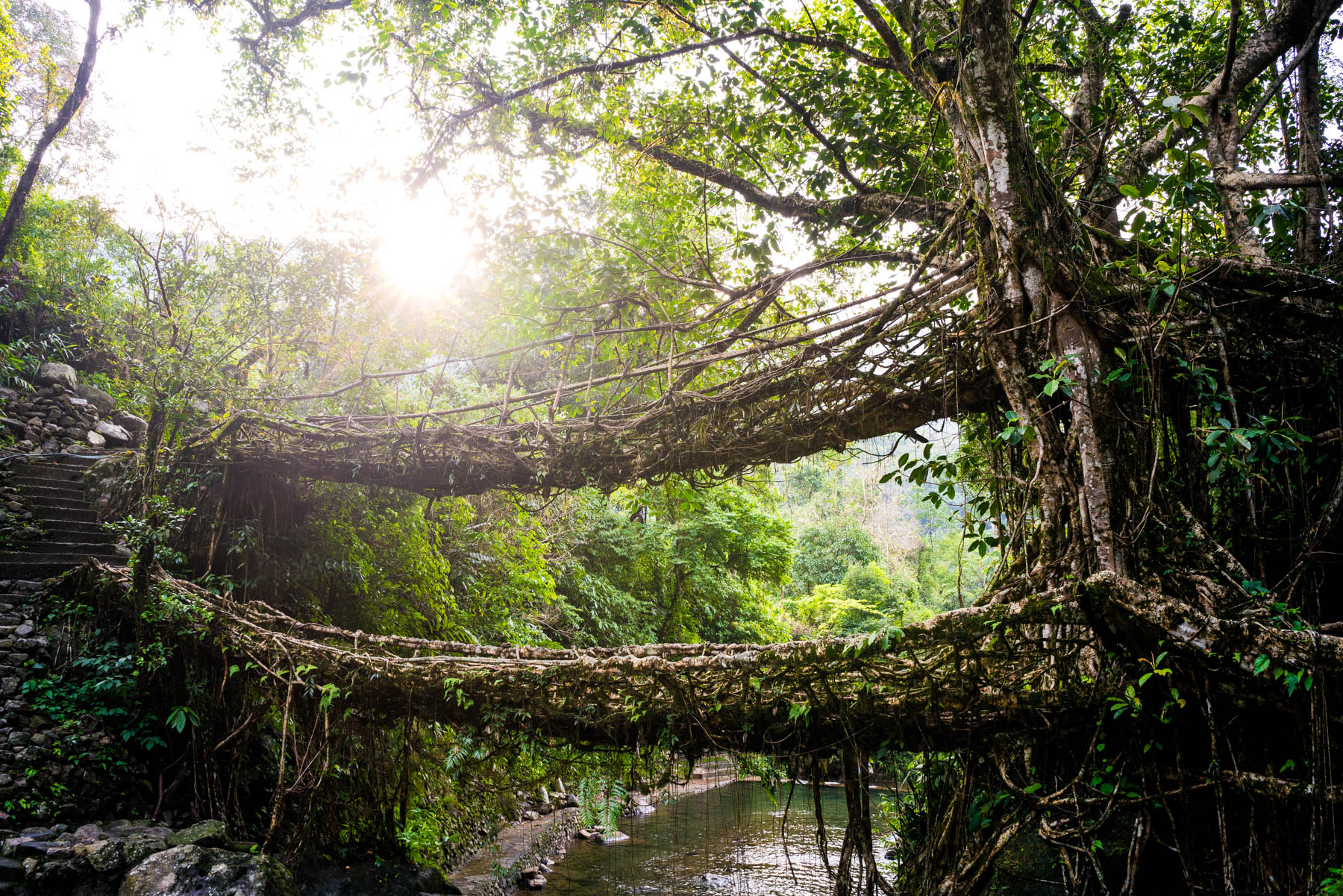


What time of the year did you visit Shillong,cherrapunji? Also would you recommend a visit in monsoon here?
The Sumo Stand for Shared Sumos to Sohra ( Cheerapunjee ) is locally known as “”Anjalee “” Sumo Stand
had been here in Sep 2018. Wow. ! Beautiful place… visited Mawsmai Cave, Cherrapunji, Dawki in 2 days from Shillong. Then a couple of days in Guwahati. Was a great trip, brought back awesome memories 🙂
Hi,
How much is the walk to reach Serene Guesthouse, Nongriat after we park our car. Also, do they help with luggage if it’s a long walk?
Regards
Gaurav
Hi Gaurav. Expect to walk for several hours (it took me almost 2 hours) on steep steps and hills. I wouldn’t count on luggage help – you’re expected to carry in what you need.
is this trek possible with kids of 2 years and 10 years…??
You’d have to carry your 2 year old child, the 10 year old child could make it if they’re active. It’s about 2 hours of walking up steep steps, so make sure they’re prepared for that.